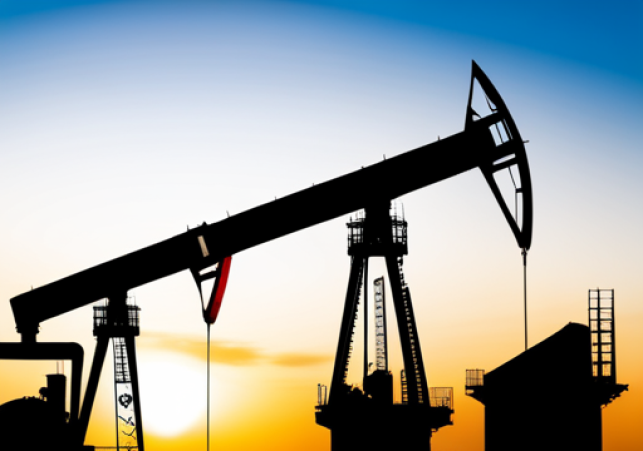
3D Printing benefits for Oil & Gas industry
3D printing, also known as additive manufacturing, has started to make an impact on the oil and gas industry. While the technology is still in its early stages of adoption, it shows great potential to bring several benefits to this sector. Here are some ways in which 3D printing can be beneficial in the oil and gas industry:
-
Customized Equipment: 3D printing allows for the production of customized components and equipment tailored to specific requirements. This can include complex geometries, lightweight designs, and parts with integrated functionalities, leading to improved performance and efficiency.
-
Rapid Prototyping: 3D printing enables quick and cost-effective prototyping of new designs. This allows engineers to iterate designs more rapidly, test concepts, and validate ideas before committing to large-scale production, reducing time-to-market for new equipment and technologies.
-
Supply Chain Efficiency: 3D printing can help optimize the supply chain in the oil and gas industry. By producing spare parts on-demand, companies can reduce inventory costs, eliminate the need for long lead times, and respond more effectively to equipment breakdowns or emergencies.
-
Reduction in Downtime: With the ability to produce spare parts on-site or at nearby facilities, 3D printing can significantly reduce downtime caused by equipment failure. Instead of waiting for replacement parts to be shipped, companies can quickly print and replace components, minimizing production interruptions.
-
Improved Performance and Durability: By using advanced materials and optimizing designs, 3D printing can produce components that offer enhanced performance and durability compared to traditional manufacturing methods. This can lead to longer equipment lifespan and improved operational efficiency.
-
Lightweight Structures: 3D printing allows for the creation of lightweight structures by utilizing advanced materials and intricate lattice designs. Lightweight components can reduce overall equipment weight, leading to fuel savings in transportation and improved energy efficiency in operations.
-
Complex Geometries: Additive manufacturing enables the production of components with complex geometries, including internal channels, honeycomb structures, and optimized shapes. This can enhance the efficiency of fluid flow, heat transfer, and overall equipment performance.
-
Reduced Material Waste: Traditional manufacturing methods often generate significant material waste. In contrast, 3D printing is an additive process that only uses the necessary amount of material, minimizing waste and reducing costs associated with material disposal.
-
Remote Operations: In remote or offshore locations, where transporting equipment and spare parts can be challenging and time-consuming, 3D printing can provide a practical solution. Companies can use 3D printers on-site to produce critical components, eliminating the need for long-distance transportation.
-
Tooling and Fixtures: 3D printing can be used to produce custom tooling and fixtures used in various oil and gas operations. This includes jigs, inspection gauges, drilling templates, and other specialized tools that improve accuracy and efficiency during manufacturing and assembly processes.
-
Sensor Integration: 3D printing allows for the integration of sensors, electronics, and other functional elements directly into components during the manufacturing process. This enables the production of smart components with embedded sensors for real-time monitoring, data collection, and predictive maintenance.
-
Corrosion and Wear Resistance: By using specialized materials and coatings, 3D-printed components can exhibit improved resistance to corrosion and wear. This is particularly beneficial in harsh operating environments, such as offshore platforms or downhole equipment.
-
Enhanced Safety: 3D printing can contribute to improved safety in the oil and gas industry. By enabling the production of lighter and stronger safety equipment, such as helmets, goggles, and protective gear, it can enhance worker safety and reduce the risk of accidents.
-
Equipment Optimization: Additive manufacturing allows for design optimization based on specific operating conditions. Companies can use 3D printing to create prototypes, test different configurations, and refine designs to achieve optimal performance and efficiency.
-
Remote Monitoring and Control: 3D printing can enable the production of components with embedded sensors and communication capabilities. This facilitates remote monitoring and control of equipment, enabling real-time data collection, analysis, and predictive maintenance.
-
Geothermal Applications: 3D printing can support the development of geothermal energy systems by producing specialized components and tools for drilling, well completion, and heat exchangers. This can contribute to the expansion and efficiency of geothermal energy production.
-
Additive Repair and Refurbishment: 3D printing can be used for repair and refurbishment of worn or damaged equipment. Instead of replacing entire components, companies can use 3D printing to repair specific sections, reducing costs and extending the lifespan of equipment.
-
Environmental Impact Reduction: By reducing material waste, optimizing designs, and promoting energy-efficient manufacturing processes, 3D printing has the potential to contribute to environmental sustainability in the oil and gas industry.
-
Geographical Flexibility: 3D printing can provide geographical flexibility in the manufacturing of equipment and components. Companies can set up 3D printing facilities closer to the operational sites, reducing the need for long-distance transportation and logistics.
-
Collaboration and Innovation: Additive manufacturing encourages collaboration between engineers, researchers, and manufacturers. It fosters innovation, knowledge sharing, and the development of new solutions to address challenges in the oil and gas industry.
While 3D printing is still evolving in the oil and gas sector, these points highlight the potential benefits it can bring, including increased customization, supply chain efficiency, reduced downtime, improved performance, and advancements in safety and sustainability. As the technology continues to advance, its adoption is expected to grow, leading to further innovations and efficiencies in the industry.
